Get PeakVisor App
Sign In
Search by GPS coordinates
- Latitude
- ° ' ''
- Longitude
- ° ' ''
- Units of Length

Yes
Cancel
Share ×

Scan the QR code and open PeakVisor on your phone
❤ Wishlist ×
Choose
Delete
Traverse lush rolling hills and discover ancient ruins with a trip to England’s North Wessex Downs Area of Outstanding Natural Beauty (AONB). There are 197 named peaks in North Wessex Downs AONB. The highest and the most prominent hill is Walbury Hill (297 m/974 ft).
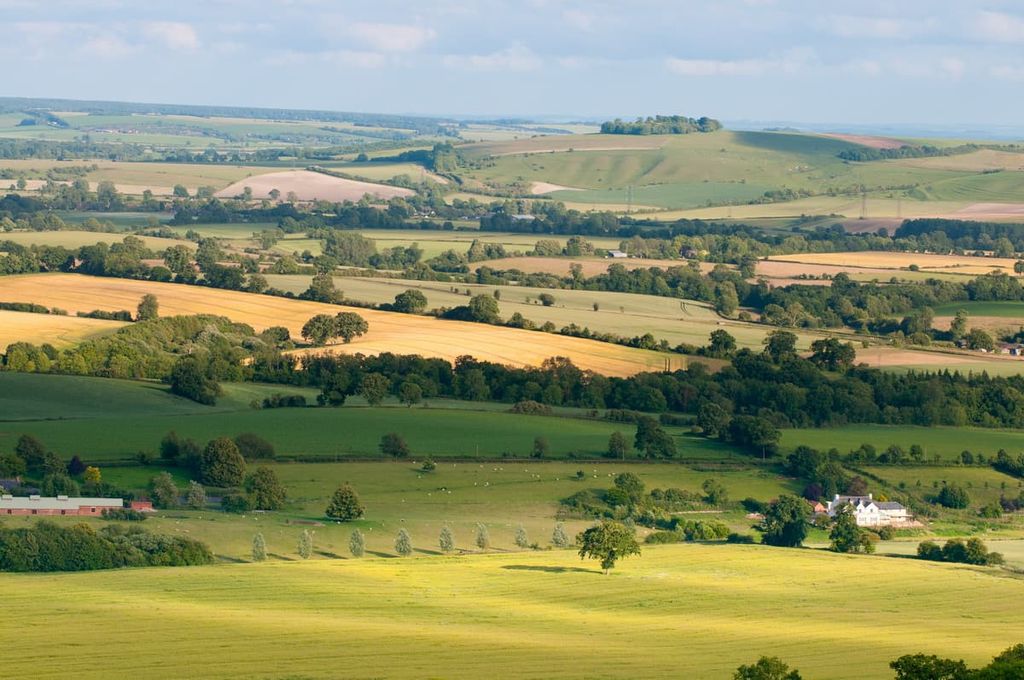
The North Wessex Downs AONB is a protected area located in southern England. It encompasses an area of 670 square mi (1,730 sq. km) across the counties of Berkshire, Hampshire, Oxfordshire, and Wiltshire.
The North Wessex Downs AONB consists of a series of chalk downlands spread across these four counties. Notable areas within the AONB include the Berkshire Downs, the North Hampshire Downs, and the White Horse Hills.
Due to these chalk hills, the North Wessex Downs feature one of England’s rarest environments—chalk grasslands. These chalk grasslands are known for their abundance of wildlife as they provide key habitats for an array of plants and animals.
Approximately 9 percent of all chalk grasslands in the UK are within the North Wessex Downs AONB. As well as these rare chalk grasslands, the North Wessex AONB is also home to heathlands, woodlands, farmlands, and streams.
The North Wessex Downs AONB forms an eastern-facing horseshoe that encircles the town of Newbury in Berkshire. The North Wessex Downs is the largest AONB in southeast England and the third-largest of Britain's 46 AONBs after the Cotswolds AONB and the North Pennines AONB.
The North Wessex Downs AONB is surrounded by several national parks and AONBs. To the northeast of the North Wessex Downs AONB is the Chiltern Hills AONB. A narrow valley called the Goring Gap separates the two areas. The River Thames, Britain's second-longest river, also helps form a natural boundary between the areas.
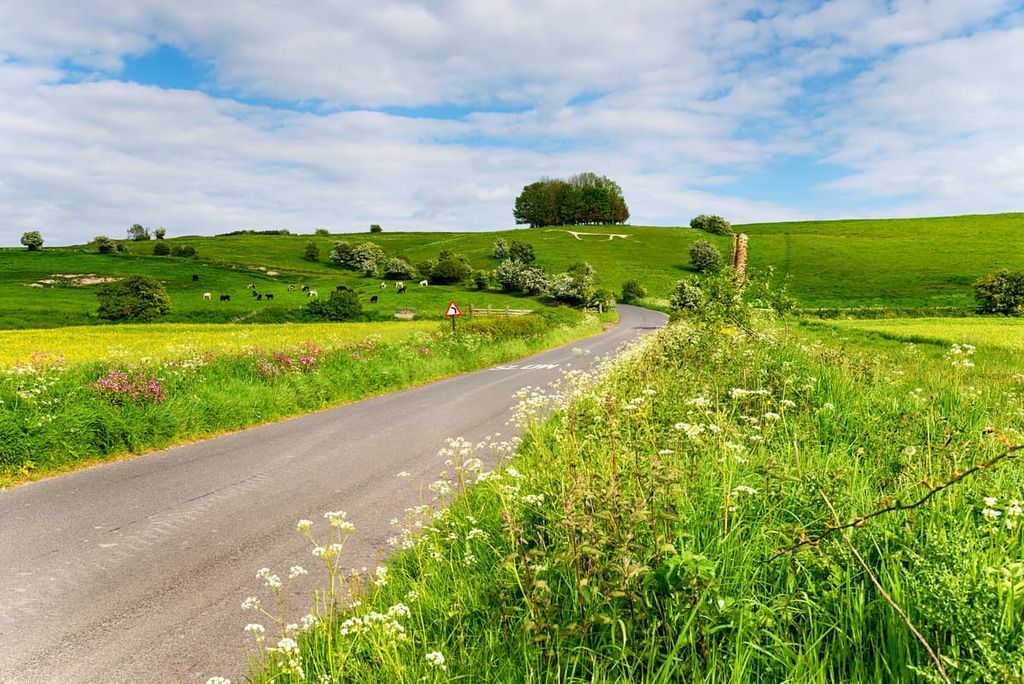
Other parks and AONBs near the North Wessex Downs include the South Downs National Park, which is approximately 15 mi (24 km) to the southeast, and the Cotswolds AONB, which is approximately 15 mi (24 km) to the north.
There are several significant towns and cities located around the edge of the North Wessex Downs AONB. Swindon is located on the park's northwestern boundary, while Reading is located on the eastern boundary. England's capital city, London, is located roughly 30 mi (48 km) east of the North Wessex Downs AONB.
The North Wessex Downs shares its geological history with much of southern England. The area is part of the Chalk Group, which includes areas like the Chiltern Hills AONB, the Cranborne Chase AONB, the Purbeck Hills, and the North and South Downs.
The landscape of the North Wessex Downs formed during the Cretaceous period between 65 and 145 million years ago. The majority of the landscape formed during the Late Cretaceous period. During this time, chalk that is about 200 meters (656 ft) thick formed in areas of what is now the AONB.
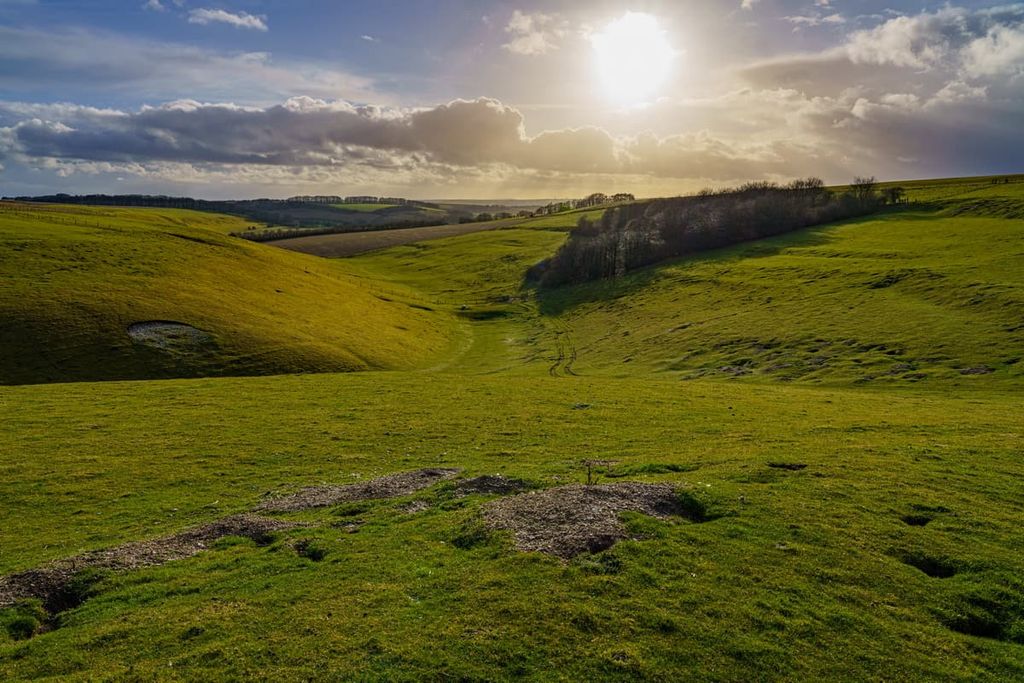
The area's chalk was created when England lay under a shallow sea near the equator approximately 65 million years ago. This chalk is composed of the remains of microscopic plankton and other small sea creatures, including ammonites and sea sponges.
When the chalk first formed, it would've been twice as thick as it is today. Toward the end of the Cretaceous period, the movement from the Eurasian, Indian, and African tectonic plates folded and uplifted the landscape, creating the North Wessex Downs.
This geological event, known as the Alpine orogeny, created many of the hills of southern England, as well as significant mountain ranges around the world, including the Alps, the Pyrenees, and the Hindu Kush.
Today, the North Wessex Downs is a collection of minor chalk downlands and hill ranges that don't exceed 300 m (984 ft) in height.
The highest point in the park is Walbury Hill (297 m/974 ft), which is also the area's only Marilyn (a summit with a prominence of 150 m/492 ft or more). Other notable hills in the AONB include Martinsell Hill (296 m/971 ft), Milk Hill (296 m/971 ft), and Tan Hill (294 m/964 ft).
The North Wessex Downs is among the most ecologically diverse areas of the UK. This diversity is partly due to the area's chalk grasslands, which are famed for their rare flora and fauna.
A wide array of animals can be found across the North Wessex Downs' grasslands, woodlands, and farmlands. Among the largest mammals you'll find in the AONB include sheep, cattle, and roe deer. Other smaller mammals include badger, brown hare, and red fox.
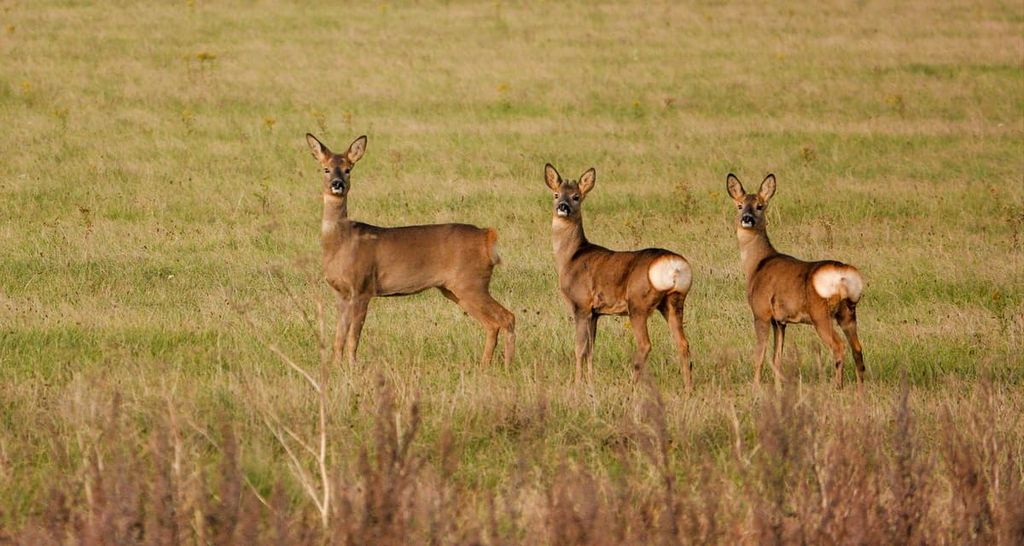
Many of the habitats across the North Wessex Downs are home to important bird species populations. The chalk grasslands support a number of declining farmland bird species, including stone-curlew and skylark.
The area's farmlands also provide essential habitats for these species. Bird species commonly seen across these farmlands include corn bunting, grey partridge, and tree sparrow.
As well as providing key environments for larger animals, the chalk grasslands of the North Wessex Downs also support a number of threatened insect species. Notable examples include the internationally threatened marsh fritillary butterfly and the declining wart-biter cricket.
In and around the streams and waterways of the North Wessex Downs, you might get lucky and spot an elusive water vole. Beneath the surface of these waterways, common fish species in the region include trout, chub, and perch. You'll find a few mollusk and crustacean species in the North Wessex Downs, too, like white-clawed crayfish and pea mussel.
The chalk grasslands of the North Wessex Downs are home to as many as 40 different plant species in a square meter (10.8 sq. ft) and over 150 species in a single field.
Due to the thin soil of chalk grasslands, most plants here are typically hardy herbs and flowers. Early gentian, one of England's only native plant species, is a schedule 8 protected species found across the chalk grasslands. Other important species include dwarf mouse ear and burnt orchid.
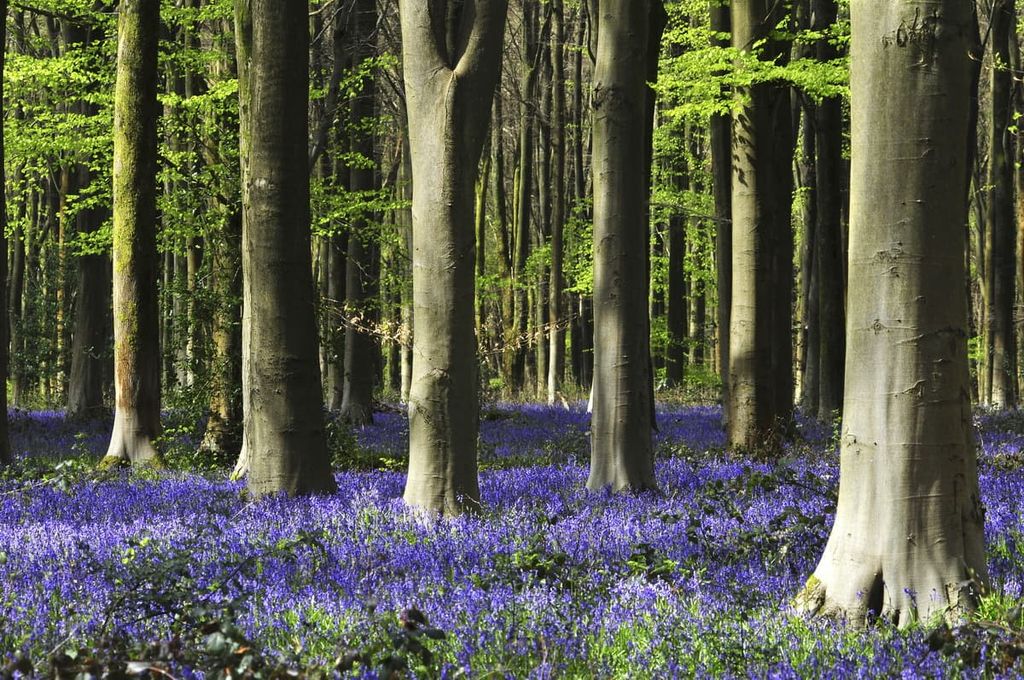
The farmlands of the North Wessex Downs AONB are home to a few rare arable plants, including corn buttercup and shepherd's needle.
Semi-natural woodlands rank as one of the rarest and most important habitats in the North Wessex Downs. In fact, they can contain over 500 species of flora and fauna. Just under 50 percent of the area's woodlands have a form of wildlife designation (i.e., protection). One of the most popular sights in these semi-ancient woodlands is blooming bluebells, which carpet the woods during the spring.
Humans have inhabited the North Wessex Downs for thousands of years. In fact, several important Neolithic and Bronze Age sites have been found across the landscape.
For example, Avebury Henge, a prehistoric monument in the region that features the world's largest megalithic stone circle, dates back to the Neolithic period. It is thought to be over 3,000 years old.
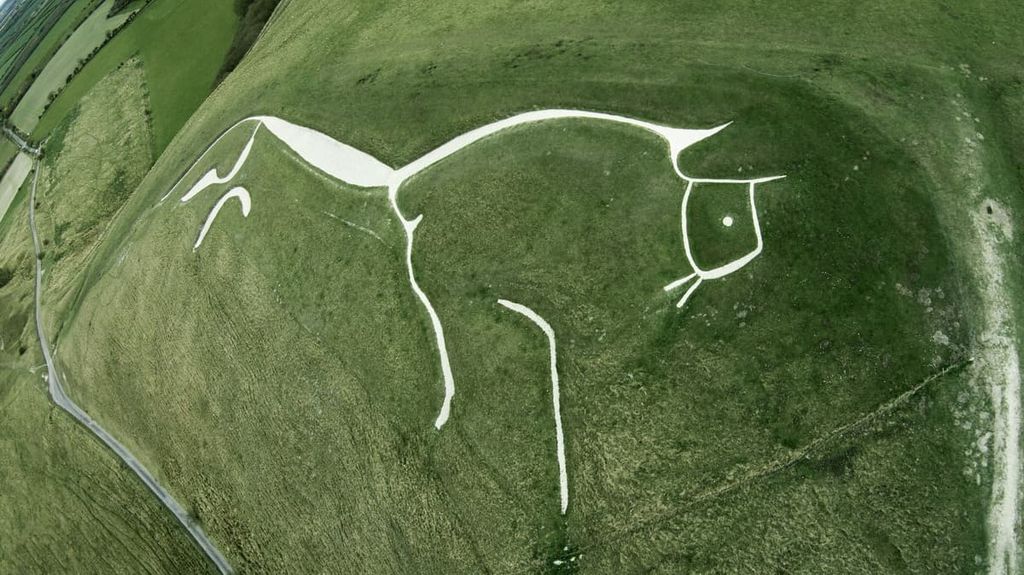
The North Wessex Downs also contains one of the world’s most famous hill figures—the Uffington White Horse.
The Uffington White Horse depicts a 110 m (360 ft) long horse carved into the chalk on the slopes of White Horse Hill (265 m/869 ft). The figure is thought to date back to the Iron or Bronze Age, and it is considered an early example of minimalist art.
Other notable sites include Silbury Hill, which is the tallest prehistoric human-made mound in Europe at 30 m (129 ft) high, and West Kennet Long Barrow, which dates back to the early Neolithic period.
While the majority of the North Wessex Downs is agricultural and rural, the area is also known for its association with the railway industry. Indeed, the North Wessex Downs was important to the development of the steam engine. Many of the oldest steam engines in the country can be seen in operation at the Crofton Pumping Station on the Kennet and Avon Canal.
The North Wessex Downs also features some of England's most famous and ornate country manors.
The most famous example is Highclere Castle, a sixteenth-century renovated country house owned by the Earl of Carnavron that’s famous for being the primary filming location of Downton Abbey. Other examples include the eighteenth-century Basildon Park and the seventeenth-century Ashdown House.
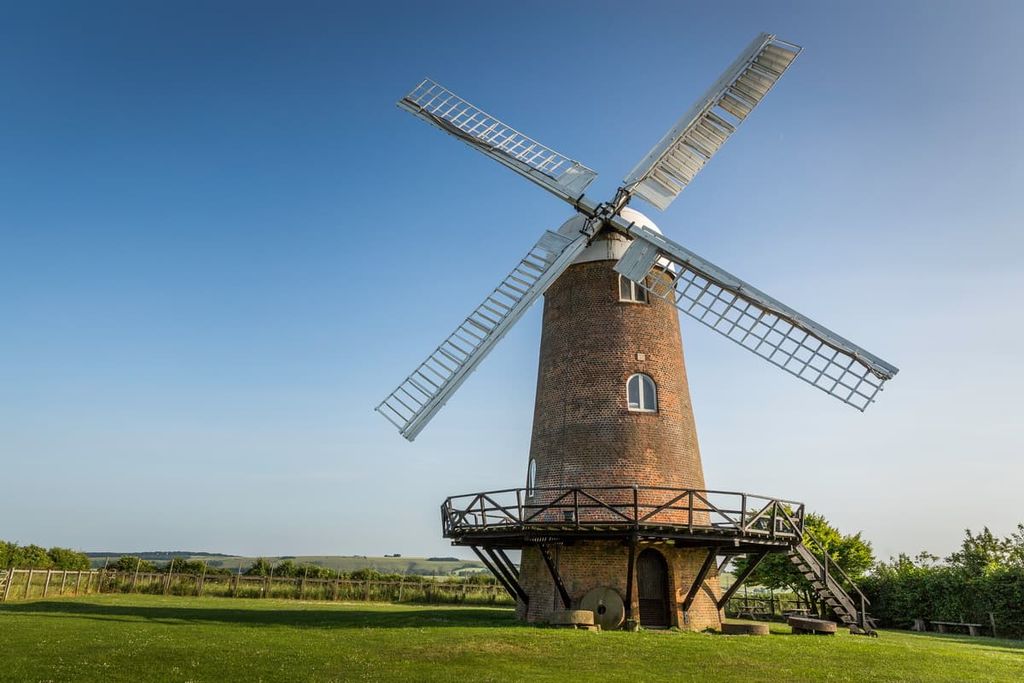
The North Wessex Downs was designated as an AONB in 1972 to protect the area's chalk grasslands, semi-natural woodlands, and historical sites. Since 2001, the North Wessex Downs AONB Partnership of local authorities has led efforts to improve and protect one of England's most important natural landscapes.
Looking to discover the best attractions and highest hills in the North Wessex Downs AONB? Read on to learn more about the area's best trails and main hiking areas.
Walbury Hill (297 m/974 ft) is the county top of Berkshire and the only Marilyn in the North Wessex Downs AONB. As a result, Walbury Hill is very popular with hikers looking to undertake the most challenging walks in the AONB. The area is also very popular with hang gliders and paragliders.
There are several ways of scaling Walbury Hill, with car parks at either end of the hill and several paths that lead near its summit. One of the shorter, yet most rewarding, ways of scaling Walbury Hill is via Gallows Down and Combe Gibbet.
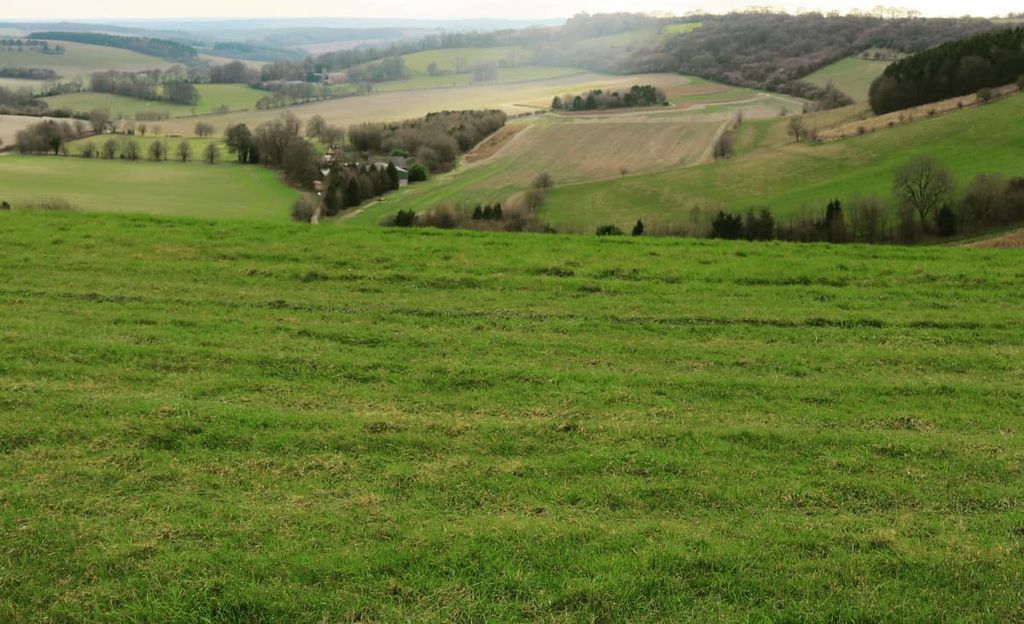
Start by parking just south of Inkpen to the east of Walbury Hill. The walk takes hikers along a signposted byway towards Walbury Hill, leading through woodlands and past several inns and farms before climbing onto the chalk escarpment.
You'll first scale Inkpen Hill, (293 m/961 ft) and then Gallows Down. Atop Gallows Down is Combe Gibbet, a gruesome sight where many murderers were hung in the seventeenth century. You'll then reach the summit of Walbury Hill, which is marked with a trig point. This walk is 6 mi (10 km) long and takes about 4 hours to complete.
A longer, alternative route up Walbury Hill also includes the country top of Hampshire, Pilot Hill (288 m/944 ft). The majority of the outward leg of the walk follows Hampshire's long-distance trek, Wayfarer's Way. Park at Ashmansworth and follow the Wayfarer's Way up Pilot Hill. Note that this walk doesn't lead by Pilot Hill’s trig point, as it's unremarkable and out of the way.
After scaling Walbury Hill, you'll return along the Test Way, a long-distance trail that follows the course of the River Test. The return leg also leads over Inkpen Hill. The walk is 15 mi (24 km) long and takes 7 or 8 hours to complete.
The Marlborough Downs and the Vale of Pewsey are located in the southwest of the North Wessex Downs AONB in Wiltshire. You'll find several notable hills in this area, including Milk Hill (296 m/971 ft), which is the county top of Wiltshire. The Tan Hill-Milk Hill plateau is also the most south westerly point in England where hikers can see highland mountain landscapes.
There's a short walk you can take to the summit of Milk Hill. The walk is 3 mi (5 km) and takes 1 or 2 hours. Start your walk by parking at the small car park between Lockeridge and Alton Barnes.
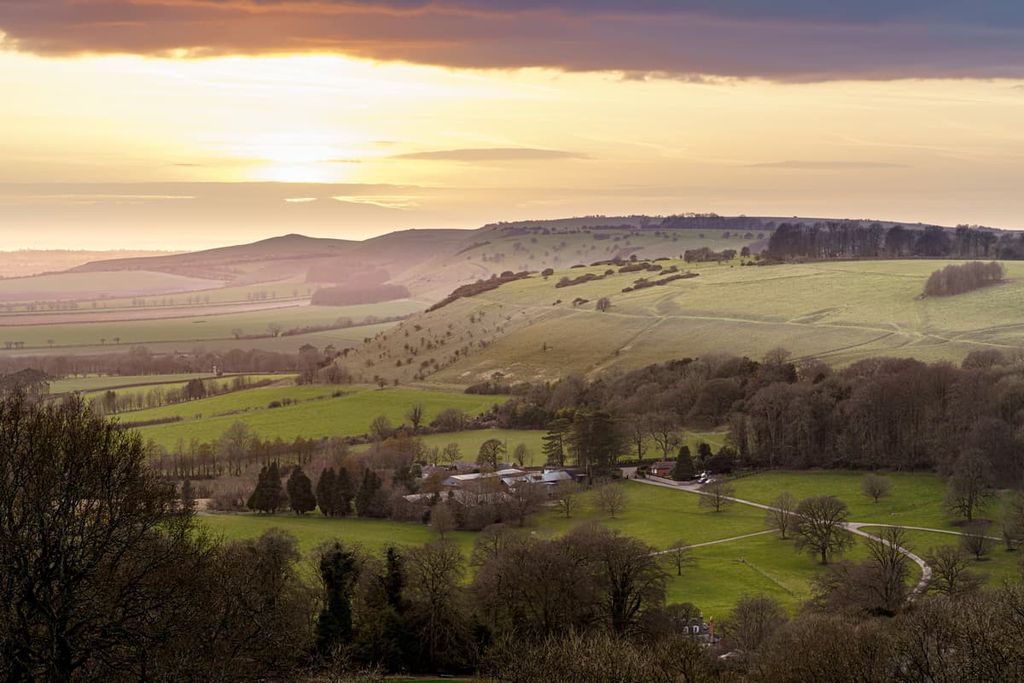
Then, head southwest onto the northern slopes of Walkers Hill (260 m/853 ft). Continue to the top of Milk Hill, passing over Milk Hill's Alton Barnes Horse, a hill figure dating back to 1812. The summit of Milk Hill isn't marked with a cairn or trig point. You can return by following the path north of the Wansdyke medieval fortification.
Another walk in this area worth considering is along the southern escarpment of the Marlborough Downs. The walk leads you to the top of Knap Hill (258 m/846 ft), with vistas of the Vale of Pewsey to the south. You pick up the trail from the car park on Lockeridge Lane, 3 mi (5 km) west of Marlborough. The walk is 6 mi (9.5 km) long and takes around 4 hours to complete.
You start by walking east, gently uphill to the summit of Knap Hill. The views here across the Vale of Pewsey to Salisbury Plains are among the finest in the AONB. You'll then cross the ancient Tan Hill Way and walk through the medieval village of Shaw.
When reaching Gopher Wood, it's possible to take a 3-mile (5 km) excursion to Martinsell Hill (296 m/971 ft), the highest point in the Marlborough Downs. Next, you'll descend into the vale. The White Hart Inn is a popular inn if you're looking for somewhere to stop midway.
After passing through the hamlet of Huish and past the thirteenth-century church of St Nicholas, you'll ascend out of the vale and back onto the Marlborough Downs. Once back on the Tan Hill Way, you'll make one steep ascent before a short walk back to the car park.
White Horse Hill (265 m/869 ft) is one of the biggest attractions in the North Wessex Downs AONB due to the prehistoric Uffington White Horse hill figure on its slopes. While you won't have great views of the horse from atop the hill, it's well worth seeing it up close and admiring views of the Vale of White Horse to the north.
The best way to hike up White Horse Hill is on the White Horse Circular Walk, which forms a part of the 87 mi (140 km) Ridgeway National Trail. The walk is manageable with a steep downhill section, so wear sensible hiking boots. The walk is 4 mi (6 km) long and takes around 2 hours to complete.
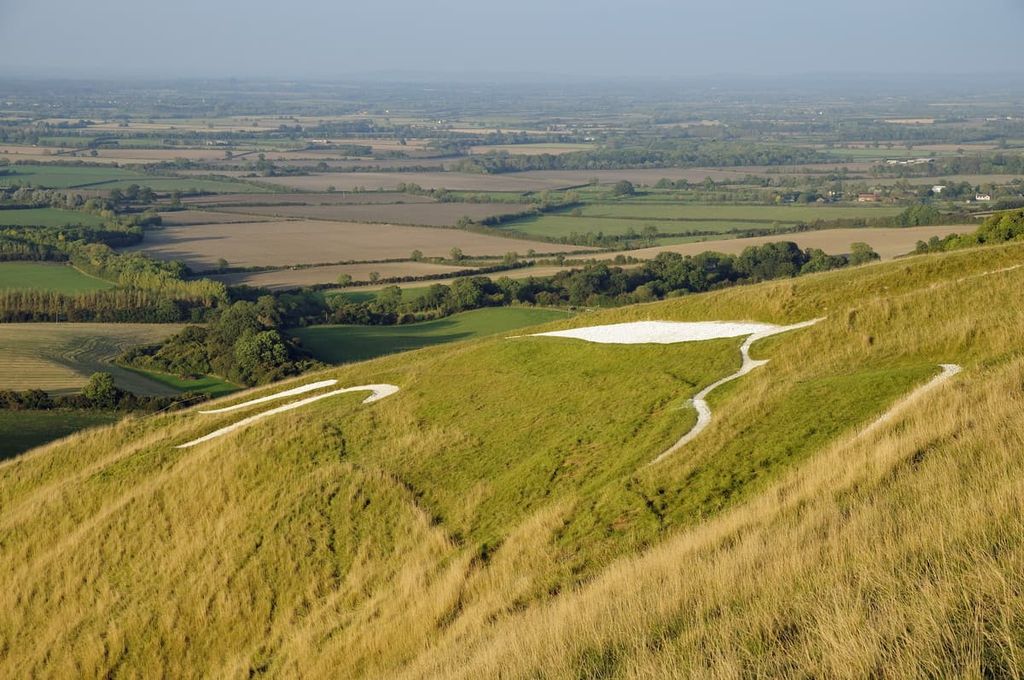
From the National Trust car park at White Horse Hill, you'll follow the signposts uphill, taking in views of Uffington Castle to your left. Atop the escarpment, head through a gate to the left to explore the Uffington Castle Iron Age fort and see the Uffington White Horse. From here, you'll have views of the Cotswolds to the west.
Continuing along the trail, you'll get some sweeping views of the Chiltern Hills on a clear day. There are several points of interest on the return leg of the walk, including the charming village of Woolstone. Toward the end of the walk, you'll be treated to panoramas of the Thames Valley, Dragon Hill (196 m/634 ft), and the village of Uffington.
The North Wessex Downs AONB is filled with fascinating archeological sites, one of the most unusual of which is Silbury Hill. At just under 40 m (130 ft) tall, Silbury Hill is the largest artificial mound in Europe and is taller than some Egyptian pyramids.
Silbury Hill is one of several Neolithic monuments in Avebury, along with the Sanctuary, West Kennet Long Barrow, and the Avebury Ring. Anthropologists and archeologists are still unsure of the original purpose of the mound. The most commonly accepted explanations include that it's a burial mound or a site for religious rituals.
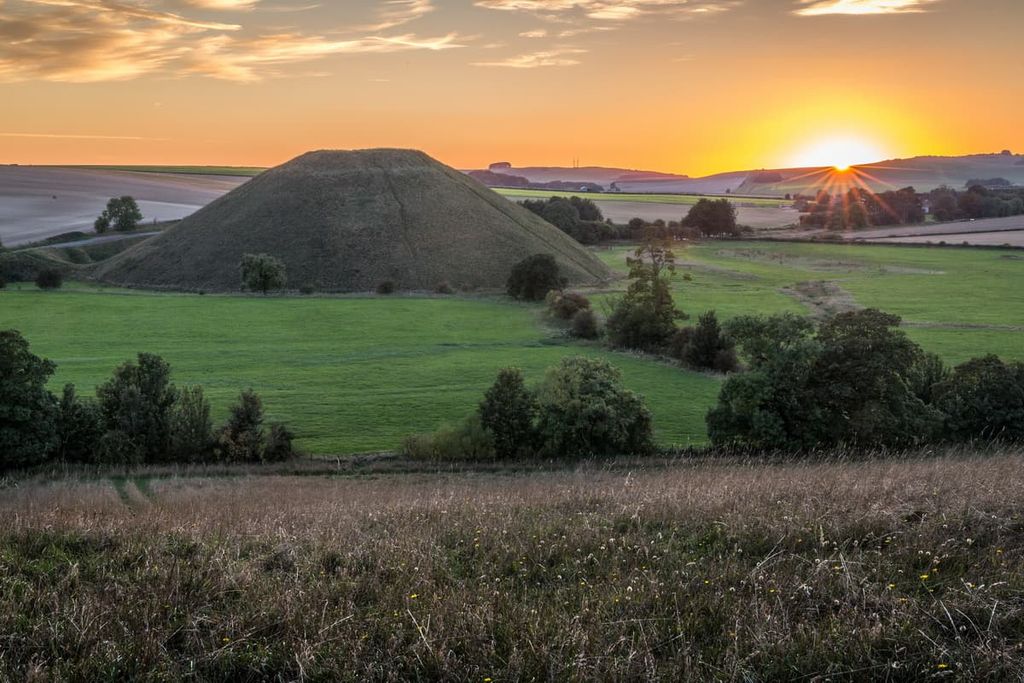
The circular walk to Silbury Hill is 6 mi (10 km) long and takes around 3 hours. You can start the walk in the village of Avebury opposite the Red Lion Pub. You'll start by walking gently uphill, passing the Sanctuary, a Neolithic stone circle.
Past the village of East Kennet, you'll walk uphill through a gate to reach the West Kennet Long Barrow. Silbury Hill is just up the road. Unfortunately, hikers aren't allowed to climb Silbury Hill as it's an important archaeological site.
You'll return to Avebury by retracing your steps downhill before crossing the A4. From the National Trust car park, it's a short walk back to your starting point.
Any literary fans visiting the North Wessex Downs AONB will want to hike to the top of Watership Down (241 m/790 ft). This hill in Hampshire is famous for being the setting of Richard Adams' 1972 novel about rabbits, Watership Down. The hike up Watership Down will be truly memorable for many hikers who grew up reading this classic novel.
There are several ways you can hike up Watership Down, with the quickest route starting at the Sydmonton Estate. The walk is 4.5 mi (7 km) long and takes approximately 3 hours. Along the way, you'll be treated to some sublime views of the North Downs.

Turn left just before the village of Sydmonton, down a track that leads towards the Downs. The trail leads up onto the crest of the ridge, where you'll join part of the Wayfarer's Way.
The top of Watership Down is covered in woodlands that likely weren't present when Adams wrote his novel. There are plenty of rabbit warrens here, so take a few minutes to do some wildlife watching.
After passing some woodlands, you'll reach Ladle Hill (234 m/767 ft) and its incomplete Iron Age hillfort. There's a waymarker and a cairn at the end of the fort, which signifies the descent route. Follow it downhill through the woodlands to return to your starting point.
Searching for somewhere to stay near the North Wessex Downs AONB? Check out some of the picturesque settlements in and around the AONB.
Located on the North Wessex Downs' eastern boundary is the market town of Reading. With a population of over 150,000 people, Reading is among the largest settlements near the AONB. It boasts plenty of attractions to keep hikers entertained during their downtime.
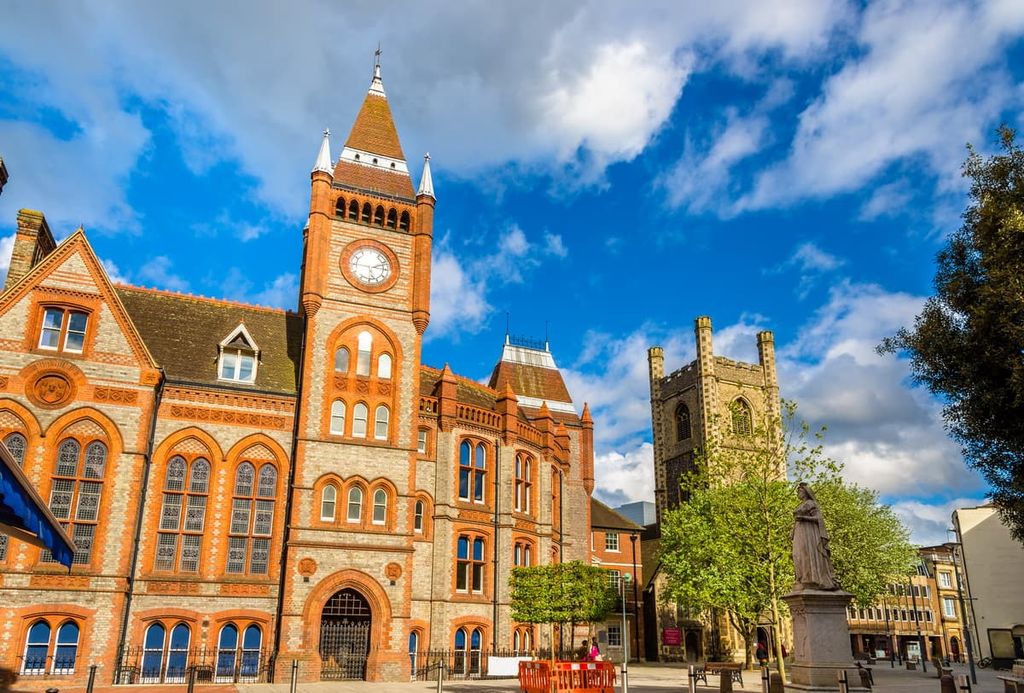
In the town, you'll also have access to the Chiltern Hills AONB, which is located just north of Reading. If you're looking for some added excitement during your stay, visit during late August when you can catch one of the UK's biggest music festivals, Reading Festival. Popular hotels in Reading include Pentahotel, the Hilton Reading, and the Crown Plaza.
Situated on the North Wessex Downs AONB's northern boundary is the town of Swindon. Roughly the same size as Reading, Swindon consistently ranks as one of the best places to live in England.
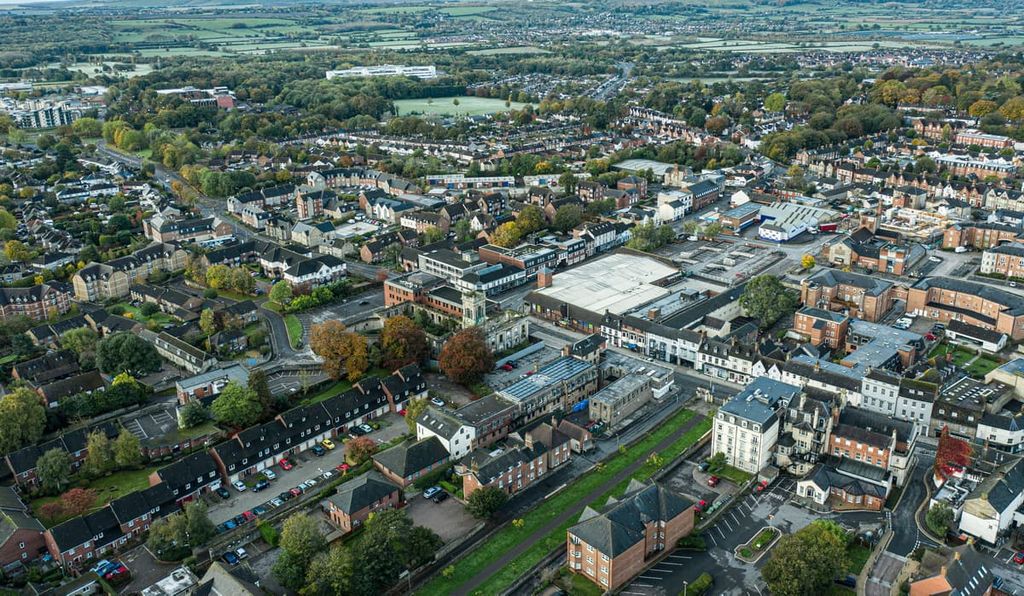
There are few better places to stay if you're planning to hike up White Horse Hill, which is just 12 mi (19 km) away. Local attractions in Swindon include the peaceful Lydiard Park and Swindon Museum & Art Gallery. Popular accommodation options in Swindon include the White Hart, the Village Inn, and the Swindon Marriott.
Tucked away in the center of the North Wessex Downs' horseshoe is the historic town of Newbury. You'll find several fascinating historical sights around Newbury, including the seventeenth-century Cloth Hall, the ruinous thirteenth-century Donnington Castle, and the iconic Victorian Highclere Castle.
As well as being a paradise for history buffs, Newbury is ideal for exploring the North Wessex Downs AONB and is less than 10 mi (16 km) from the area's highest point, Walbury Hill. If you're looking for somewhere to stay in Newbury, consider the Regency Park Hotel or the Chequers Hotel.
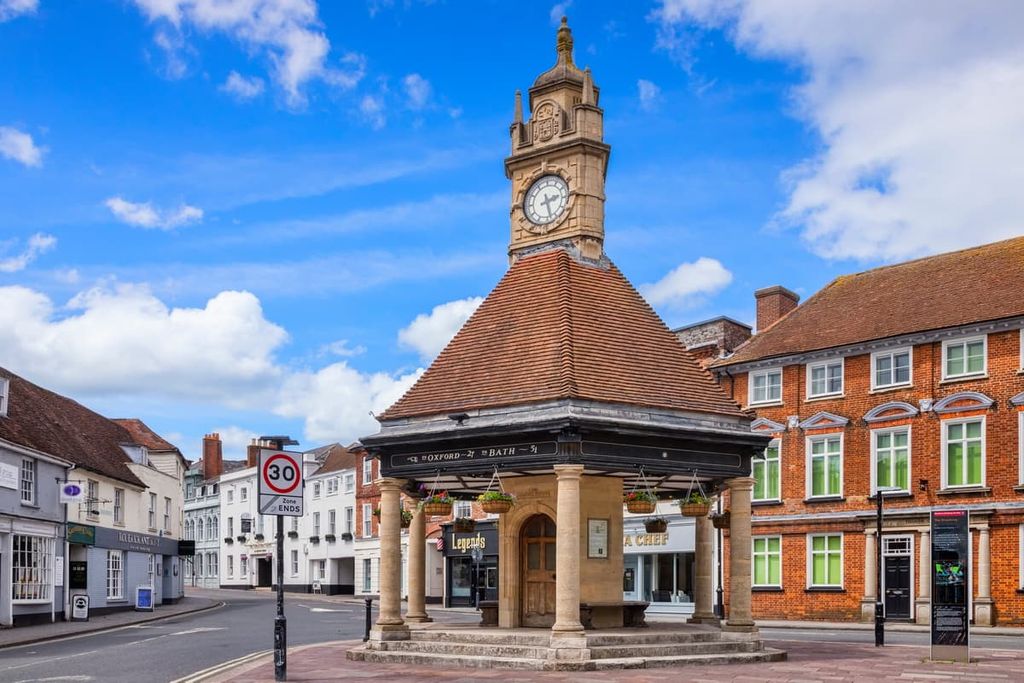
Hikers looking to stay at the heart of the North Wessex Downs AONB will want to book a room in Marlborough. Perched on the serene River Kennet, Marlborough offers easy access to many of the best hills in the area, with White Horse Hill, Walbury Hill, and Milk Hill all less than 20 mi (32 km) away.
When you're not off on a hiking adventure, you'll find a few interesting local attractions in Marlborough, like the seventeenth-century Marchant's House and the Neolithic West Kennet Long Barrow. There are a number of charming inns in Marlborough, like the Green Dragon, the Crown and Anchor, and the Castle and Ball.
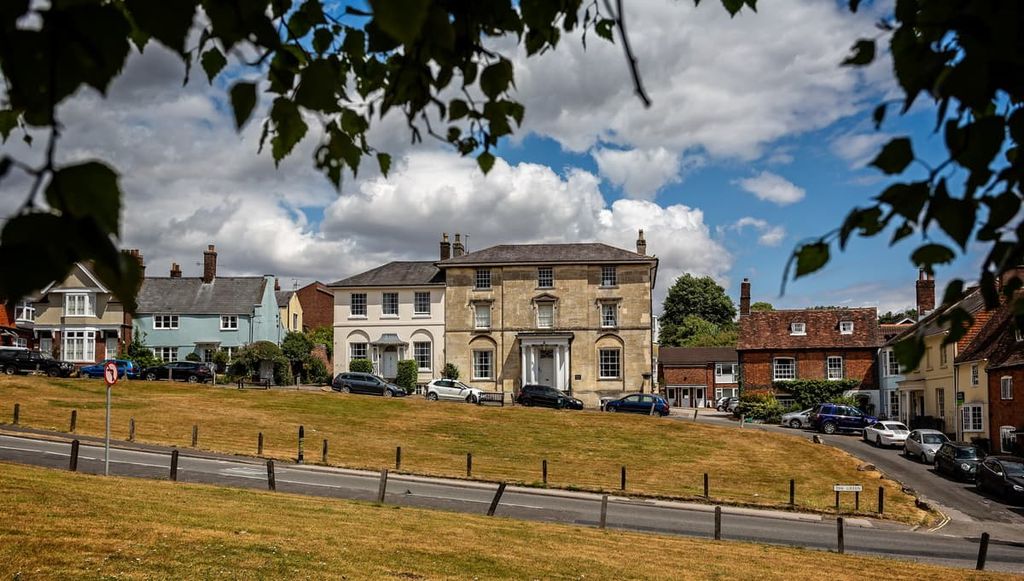
First chartered in 1141, Devizes is one of the most historic settlements in the North Wessex Downs AONB. First built around the eleventh century, Devizes Castle has been sieged several times throughout history, including by Oliver Cromwell during the English Civil War.
During your stay, ensure you pay a visit to Devizes Castle and stop by the impressive Caen Hill Locks. Located on the AONB's southwestern boundary, Devizes is well-placed for exploring the Vale of Pewsey and the Marlborough Downs. Devizes is also home to some top accommodation options, like the Black Swan Inn and the Bear Hotel.
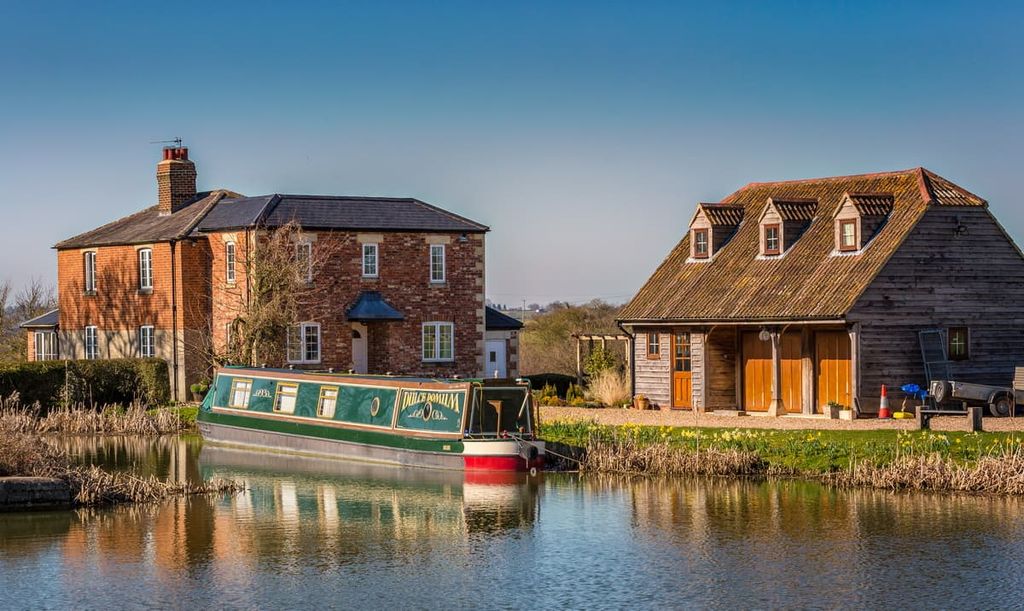
Explore North Wessex Downs AONB with the PeakVisor 3D Map and identify its summits.








